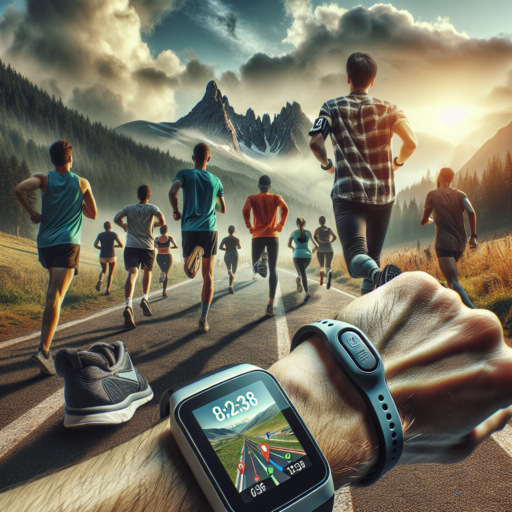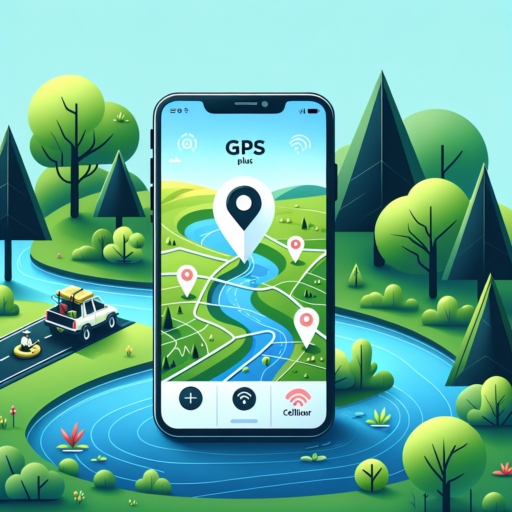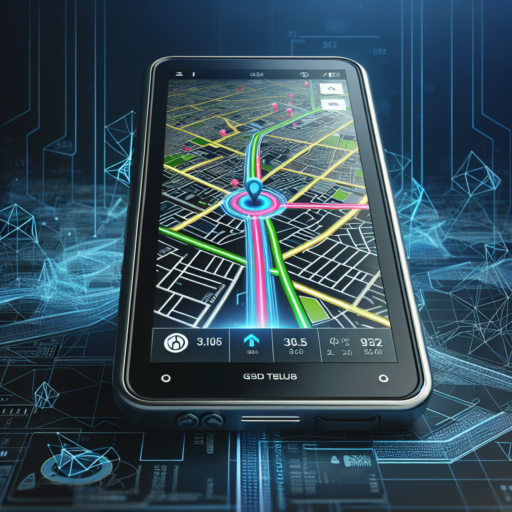Introduction to GPS for Runners: Mapping Your Training Success
Welcome to the digital age of running where GPS technology has revolutionized the way runners train and track their progress. Gone are the days of guessing distances or relying on cumbersome maps for long runs. GPS for runners offers precision, convenience, and a wealth of data to analyze and enhance your training sessions. This introduction delves into how integrating GPS into your running regimen can be a game-changer for athletes at all levels.
The advent of GPS (Global Positioning System) technology in the running community has offered a comprehensive solution to tracking not just how far you’ve run, but also analyzing your pace, elevation, and even your form in some advanced devices. Utilizing satellites circling the globe, GPS watches and apps provide real-time data that can help in mapping out your training routes, monitor your performance improvements, and set realistic training goals. It’s an invaluable tool that empowers runners to understand their bodies and workouts on a deeper level.
For those new to using GPS for running, the immediate benefit is the ability to track the distance of your runs accurately. However, the utility of GPS goes beyond just distance. Modern GPS devices for runners can track your heart rate, gauge your calorie burn, offer navigational guidance on unfamiliar routes, and even monitor your sleep to help in recovery. By embracing GPS technology, runners can unlock detailed insights into every aspect of their training, paving the way for smarter, more effective training strategies.
Top Features to Look for in a Running GPS
When selecting a running GPS, it’s essential to know the features that can truly enhance your running experience. Among the plethora of options available, certain functionalities stand out, making your investment worthwhile. These features not only help in tracking your performance accurately but also aid in improving your endurance and overall health.
Accuracy and Reliability
First and foremost, the accuracy of the GPS system is non-negociable. A reliable running GPS should offer precise measurements of your pace, distance, and route. This precision is vital for runners who are keen on monitoring their progress and setting realistic goals. Look for devices that boast high-sensitivity GPS chips and are capable of connecting to multiple satellite systems (such as GPS, GLONASS, or Galileo) for enhanced accuracy.
Heart Rate Monitoring
Another quintessential feature to consider is the heart rate monitoring capability. Many running GPS devices come with built-in heart rate sensors, which provide critical data about your cardiovascular health and effort levels. This information is invaluable for tailoring your training to your specific fitness level and goals. Opt for a GPS that offers continuous, wrist-based heart rate monitoring for the most convenience and accuracy.
Battery Life and Water Resistance
Lastly, a robust battery life and water resistance are key features that ensure your running GPS can withstand long runs and diverse weather conditions. Long battery life means you won’t have to recharge the device frequently, maintaining the continuity of your training sessions. Moreover, a water-resistant running GPS is essential for those rainy day runs or if you’re training for a triathlon. Choose a device that guarantees at least some level of water resistance, typically indicated by an IP rating, to protect your investment from the elements.
By focusing on these top features, you can select a running GPS that not only meets your needs but also enhances your running experience. Remember, the right device should offer a blend of accuracy, convenience, and durability to support your fitness journey.
Comparing Popular GPS Watches for Runners
When it comes to enhancing your running experience, choosing the right GPS watch can make all the difference. With a plethora of options available, understanding the key features that set the most popular models apart is crucial for runners aiming to track their progress, monitor their health, and achieve their training goals. In this comparison, we delve into the specifics of some of the leading GPS watches for runners, helping you navigate through the choices to find the perfect fit for your running needs.
Key Features to Consider
Before diving into the specifics of each model, it’s important to highlight the essential features that runners should consider when comparing GPS watches. Battery life, accuracy, water resistance, and the variety of tracking capabilities stand out as significant factors. Moreover, the integration with other devices and apps, alongside the watch’s ability to provide insightful feedback on your performance, are crucial for a holistic training approach. The right blend of these features can significantly enhance your running experience.
Popular Models on the Market
Among the vast selection of GPS watches designed for runners, certain models have risen to the top due to their exceptional features and reliability. Names like Garmin Forerunner, Polar Vantage, and Suunto 9 are frequently mentioned by running enthusiasts for their precision, durability, and the depth of data provided. These models cater to a wide range of runners, from novices looking for basic tracking to serious athletes seeking advanced metrics. Each brand brings something unique to the table, making the decision a matter of personal preference and specific requirements.
By focusing on the attributes that matter most to you as a runner and comparing the popular GPS watches in the market today, you can make an informed decision that will enhance your running sessions. Remember, the goal is to find a watch that not only tracks your runs accurately but also motivates you to push beyond your limits while keeping you connected to your fitness community. Whether you prioritize battery life, data accuracy, or the array of tracking features, there is a GPS watch out there that’s perfectly suited to your runner’s journey.
How to Use GPS Data to Improve Your Running Performance
Utilizing GPS data to enhance your running performance can revolutionize the way you approach your training sessions. By analyzing metrics such as pace, distance, and elevation, runners can gain an insight into their performance, making it possible to refine techniques, set realistic goals, and measure progress over time. Understanding the nuances of how to use this data effectively is key to taking your running to the next level.
Analyzing Your Pace and Distance
One of the primary benefits of GPS data is the ability to track your pace and distance in real-time. This immediate feedback allows for adjustments mid-run, helping to avoid burnout on long runs or increase effort during speed work. By reviewing your pace across various terrains and distances, you can identify patterns and make informed adjustments to your training plan. For instance, noticing a consistent drop in pace at certain distances can signal a need for improved endurance training.
Utilizing Elevation Data for Training Adaptation
Elevation data provided by GPS can be particularly beneficial for runners looking to improve their performance on specific types of terrain. Analyzing elevation changes during your runs can help you understand how elevation affects your pace and endurance. This insight can guide you to integrate more hill training or flatland speed work into your routine, depending on the races you’re training for or the weaknesses you’re aiming to overcome. A strategic approach to elevation can significantly enhance your adaptability and resilience as a runner.
Over time, the accumulation of GPS data provides a comprehensive overview of your running history, highlighting improvements and pinpointing stagnations in performance. Regularly reviewing this data inspires informed decision-making regarding training adjustments, recovery periods, and nutrition. Embracing the power of GPS data not only boosts your running performance but enriches your overall training experience by embedding a deeper understanding of how your body responds to various challenges.
Navigating Price vs. Performance: Finding the Best GPS for Runners on a Budget
When it comes to enhancing your running experience, the choice of a GPS watch can be crucial. However, balancing the cost with the desired features often poses a challenge, especially for budget-conscious athletes. The key lies in identifying which features are indispensable and which ones are nice-to-have but not essential. This fine line helps runners make a more informed decision without compromising performance or breaking the bank.
Comparing GPS Watches: It’s not just about price; it’s also about what you get for your money. A higher price tag doesn’t always guarantee superior performance, just as a lower-priced model isn’t necessarily inferior. Look at the battery life, water resistance, and the accuracy of the GPS tracking. You’ll often find that some mid-range models offer a sweet spot, balancing cost with an impressive array of features suitable for both casual joggers and more serious runners.
Understanding the technology behind GPS watches is also crucial. The latest models may boast new features like heart rate monitoring, detailed running dynamics, and customizable training plans. However, consider whether these advanced features will truly benefit your training or if they’re merely nice extras. Sometimes, older models provide everything a runner needs without the added cost of cutting-edge technology they might not use.
The Latest Advancements in GPS Technology for Runners
Keeping pace with the latest advancements in GPS technology for runners, it’s clear the landscape is fast-evolving, bringing more precision and a plethora of features designed to enhance running experiences. Innovations in this space are not just focused on tracking distance and pace anymore; they are increasingly about providing comprehensive insights into a runner’s performance, physiology, and even their environment.
One of the significant advancements is the integration of multi-band GNSS support in newer running watches. This feature allows devices to connect to multiple satellite systems at once, drastically improving accuracy in location tracking. Runners can now expect less signal interference in challenging environments, such as urban canyons or deep forests, making every stride count towards their training goals.
Moreover, developers have pushed boundaries by incorporating biometric sensors that monitor heart rate variability, blood oxygen levels, and even stress scores. Coupled with GPS data, these metrics offer a holistic view of a runner’s health and performance. Additionally, advancements in battery technology mean that these feature-rich GPS watches can last longer, ensuring runners have their indispensable training partners ready at all times.
Setting Up Your GPS Device: Tips and Tricks for Runners
Setting up your GPS device properly is crucial for runners who want to track their performance accurately and make the most out of their training sessions. GPS technology has revolutionized how athletes monitor their distance, pace, and time, providing invaluable insights into their training progress. However, optimizing these devices for running requires a bit of know-how. Here are a few tips and tricks to keep in mind.
Choosing the Right Settings for Your Run
Before you hit the pavement, it’s important to ensure your device is configured for your specific running goals. If you’re focusing on improving your pace, for instance, setting your GPS device to display real-time speed and average pace can be incredibly beneficial. Similarly, for long-distance runners, monitoring elevation gain and heart rate can help in managing effort levels throughout different segments of their runs. Taking the time to customize the data screens according to your training focus will not only enhance your running experience but also provide more relevant metrics to analyze post-run.
Ensuring Accurate GPS Tracking
Accuracy is key when it comes to GPS devices, as even slight discrepancies can impact your training analysis. To ensure your device is providing the most accurate data:
- Wait a few minutes before starting your run to allow your GPS device to lock onto satellites securely. This might mean standing still outside, away from tall buildings or dense forests, which can interfere with the signal.
- Regularly update your device’s firmware and software. Manufacturers often release updates that improve satellite connectivity and tracking accuracy.
- Calibrate your device if it offers that feature, especially if you switch between running indoors and outdoors. Calibration can significantly improve distance tracking accuracy.
Navigating through the myriad of settings and preferences on your GPS device can be overwhelming at first, but spending some time to understand and adjust them can greatly benefit your running routine. Remember, the goal is to tailor your device to your specific needs, allowing for a seamless integration into your training that enables you to focus on hitting those running goals.
GPS for Runners: Common FAQs Answered
When it comes to enhancing your running experience, a GPS device can be a game-changer, offering precise data and insights into your training sessions. This technology has evolved significantly, leading to a plethora of options available for athletes. Below, we tackle some of the most common questions runners have about using GPS technology to enhance their performance.
How Accurate Are GPS Watches for Runners?
One of the foremost concerns among runners is the accuracy of GPS watches. Modern GPS devices for runners have advanced to achieve remarkable accuracy. They utilize a network of satellites to track your location, speed, and distance traveled. However, factors like dense forests, tall buildings, and sometimes even atmospheric conditions can slightly affect the precision. Generally, for the vast majority of training environments, these watches provide data accurate enough for effective training and race planning.
Can GPS Watches Improve Running Performance?
Many runners wonder whether investing in a GPS watch can actually lead to an improvement in performance. The answer is yes. These devices offer a wealth of data including pace, distance, elevation gain, and even heart rate, allowing for a more structured and efficient training routine. By analyzing this data, runners can identify areas of improvement, monitor progress, and adjust their training plan accordingly. Additionally, features like virtual pacing functions help runners to stay on target, directly influencing endurance and speed.
Are There Affordable Options for GPS Watches?
While GPS technology tends to be associated with high costs, there are actually a wide range of devices catering to all budgets. The market today includes both premium models with exhaustive features and more basic, affordable options that still offer the crucial metrics needed for effective running training. It’s important to assess which features are essential for your training regimen to find a balance between functionality and affordability.
No se han encontrado productos.
Integrating GPS Tracking with Running Apps: A Comprehensive Guide
Integrating GPS technology with running apps has revolutionized the way runners track and analyze their running metrics. This advancement allows for real-time monitoring of distance, pace, and routes, enhancing the training experience for both amateur and professional runners. With the ability to accurately measure progress, runners can tailor their training plans more effectively to achieve their fitness goals.
Benefits of GPS Integration in Running Apps
The integration of GPS tracking in running apps offers numerous advantages. Firstly, it provides precise data on the distance covered, allowing runners to accurately track their progress and make necessary adjustments to their training regimen. Additionally, GPS-enabled apps can monitor a runner’s pace in real-time, enabling adjustments to be made during the run to meet specific training targets. Moreover, the integration offers route tracking features, which is beneficial for exploring new running paths and ensuring safety during outdoor activities.
To maximize the effectiveness of running apps with GPS tracking, it’s essential to ensure that the GPS function is accurately calibrated and that the app is compatible with the device being used. Regular updates and maintenance of the running app can also enhance the precision of GPS tracking, ensuring that runners have access to the most accurate and up-to-date information.
Avoiding Common Mistakes When Using a GPS for Running
When it comes to enhancing your running experience, GPS watches and apps are powerful tools. However, a few common pitfalls can hinder their effectiveness. Recognizing and avoiding these mistakes is crucial for runners looking to accurately track their progress and improve their performance. By being mindful of these errors, you can ensure that your GPS serves as a valuable ally in achieving your fitness goals.
Not Calibrating Your Device Properly
One of the first steps in avoiding mistakes with your GPS device is ensuring it is accurately calibrated. Many users overlook this essential setup step, leading to inaccurate distance and pace readings. Before embarking on your runs, take a moment to calibrate your device according to the manufacturer’s instructions. This might involve downloading updates or stepping outside to allow the device to locate satellites more efficiently.
Ignoring Software Updates
Another mistake runners often make is ignoring software updates. Manufacturers regularly release updates that enhance the accuracy and functionality of GPS devices. By postponing these updates, you risk using outdated software that may not provide the most accurate information about your runs. Regularly check for updates and install them to ensure your device is functioning at its peak performance.
Ultimately, by addressing these common errors, you can optimize your running routine and fully leverage the capabilities of your GPS device. Paying attention to calibration and software updates plays a pivotal role in avoiding frustrations and making your runs more productive and enjoyable.




